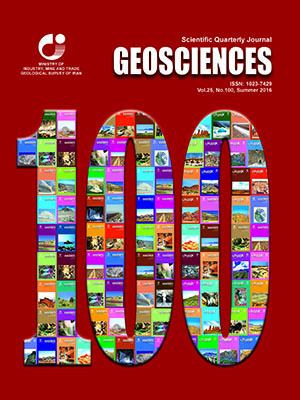Document Type : Original Research Paper
Authors
1 P.hD Student, Faculty of Earth sciences,Shahid Beheshti University, Tehran, Iran
2 Associate Professor, Faculty of Earth sciences,Shahid Beheshti University, Tehran, Iran
3 Associate Professor Geological survey of Tehran, Iran
Abstract
The study area is located in the SW Rafsanjan city and central Iran. In the area, strike- slip faults effected the Cenozoic unites. This paper analysis subsidiary fault data collected from damage zones associated with the Cenozoic Rafsanjan intraplate right-lateral strike-slip fault systems in SW Rafsanjan city. Fault sets, arranged in a consistent kinematic architecture that is compatible with the Cenozoic regional strike-slip environment. In the paper, kinematic architecture of fault zone interpret in the subsidiary fault. The results show that five peaks is prominence. Angular and kinematic relation among subsidiary fault set show that right-lateral strike- slip and revers fault are the dominant kinematic type in the area. Based on, the angular analysis in the damage zone, we have 5 subsets. 2 subsets of 5 subsets named 1rev (NW-SE trending) and 2rev (E-W trending). In the strike- slip fault mechanism, 3 subsets is demined, three azimuth named 1rl (NW-SE striking), 2rl (E-W striking) and 3rl (WNW-ESE striking). Average strike of set 1rl and 1rev indicate the orientation of the PDZ for fault systems and the PDZ be produced by early localization of the principal displacement zone along pre-existing mechanical discontinuities inherited. Early formation of the PDZ by re-activating pre-existing mechanical discontinuities.The azimuthal value of the faults set in the kinematic architecture are similar to predicted by the simple shear Reidel model. By analysis with kinematic architecture in damage zone of strike- slip fault system indicated that the linking damage zone is very important to increase permeability and created void. The void is low pressure stress and magma can intrude in the area and the dikes formed. The PDZ induced stress and the second and third order fracture is created. Stress analysis in the study are show shear – compression regime convert to compression. The maximum principle axis show N20E to N-S in the Cenozoic. The change of stress regime is correlated by formation fault and fold with E-W trend. The change regime caused reactive pre-exiting fault.
Keywords

